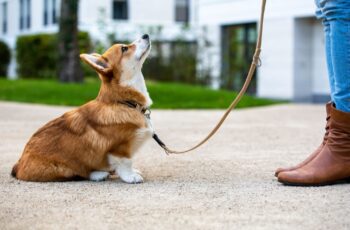Boxer dogs are one of the most beloved of the larger dog breeds you can choose for a furry canine companion for lots of great reasons. Despite being very goofy and silly much of the time they are also highly intelligent – intelligence they sometime use to devious ends – and endearingly gentle and loving.
They make great family pets and are very loyal – and protective – of those they consider a part of their pack, i.e., their human family.
Boxers are also high energy dogs, especially when they are puppies and young dog, and needs lots of physical and mental exercise to use up that energy before it becomes destructive behavior. But how do you train a boxer dog?
The answer is, in a nutshell, with a lot of love and patience. Although, as any boxer parent can attest, boxers are very strong-willed they are also very trainable. And training for this breed is especially important.
Goofy boxers are often unaware of their size as they grow – they can reach anywhere from 50lbs to 80lbs by the age of one – and left to their own devices will, thanks to their smarts, invent their own fun games. Games that often include ‘chew all the shoes’, ‘eat all the furniture’ and ‘steal all the food’.
When Should Boxer Dog Training Start?
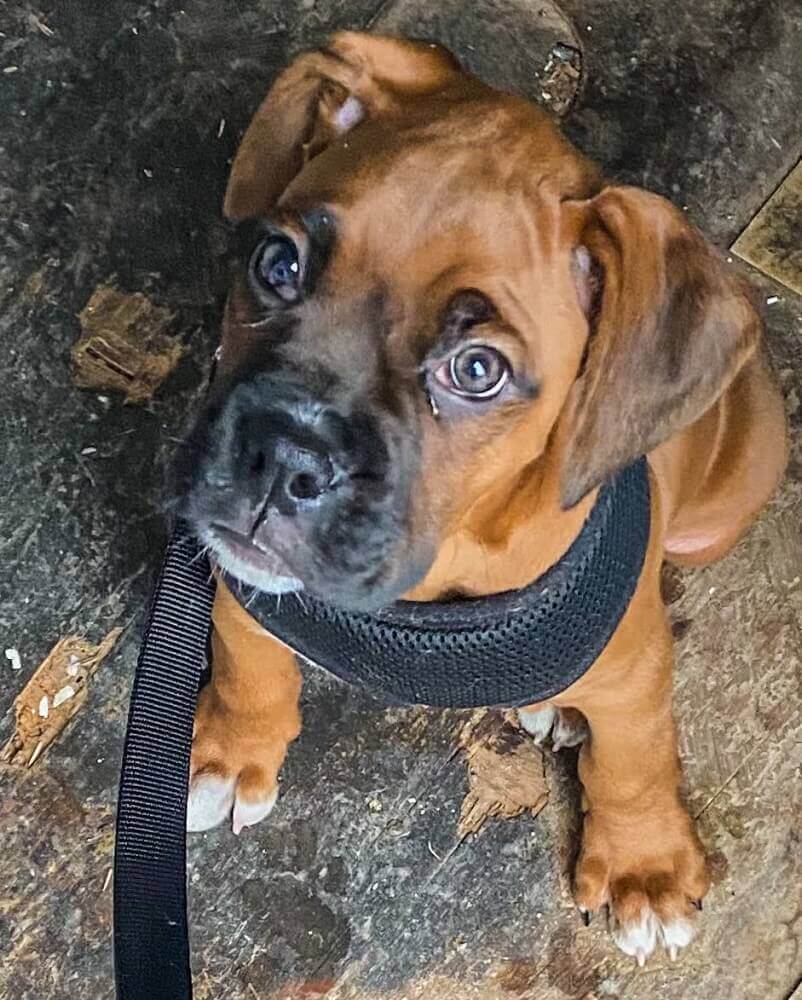
Semiformal dog training should start early for boxer puppies, as they are smart enough to respond to it from as little as six weeks old. The earlier this training begins, the less trouble these mischievous – but adorable – pups will cause.
How to Crate Train Your Boxer Dog
No pup should be left in a crate for awfully long periods of time when they are awake, and that is especially true of boxer dogs who are very social creatures.
However, crate training can help ensure that young boxers get the sleep they need safely and do not chew up the whole house during those unavoidable times when they must be left alone.
Before you can begin crate training your boxer dog you will need to pick out the right crate.
As boxers are denning dogs, the crate will ideally become their personal den, so it is best to start out with a crate they can grow into and make their own. As boxers are large dogs when fully grown that means buying a sturdy, large crate, even if it seems way too big for him while he is still growing.
Midwest Life Stages Double Door Folding Crate for Large Dogs (71 – 90lbs)

Click here to see this dog crate on Amazon
Simply putting a boxer puppy in a crate and leaving him there is NOT the right way to crate train. Doing so will only make him dislike the crate, which is not a place for punishment, but safety and rest.
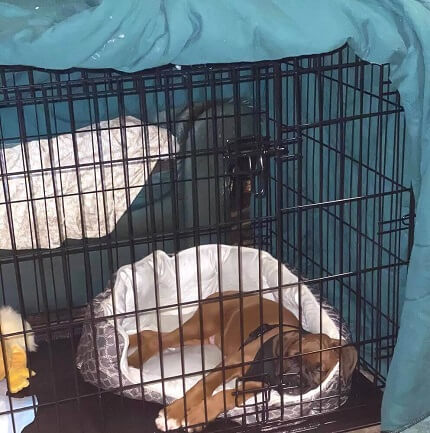
To get your boxer used to his crate place it in a high traffic area of the home but keep a cover handy for nap times. Start off by having him go into the crate for short periods of time in your presence. Reward and praise him when he sits quietly in it.
When your boxer is more used to his crate begin leaving the room, and eventually leaving the house. This should be a gradual process, following a timeline that looks like this one:
Never use the crate as a place of punishment and ensure that your pup has a comfortable bed for sleeping on and a few toys to keep him occupied.
How to Do Basic Training for Your Boxer Dog
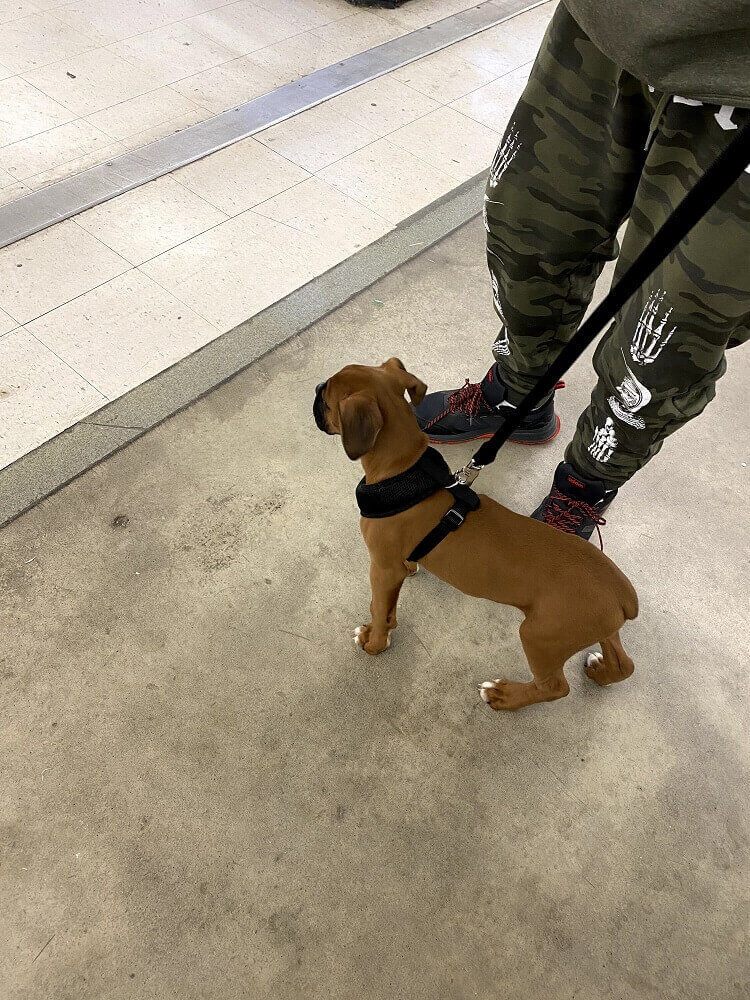
As they are very smart, boxer dogs will usually pick up basic commands – sit, stay, fetch – faster than many other pups. However, unless you make it clear that you are the alpha in the ‘pack’ he may only respond when he feels like it.
From day one your boxer needs to know that you are in charge. This should never involve smacking or shouting but adopting a lower tone of voice that is as commanding as you can muster.
If your pup begins to lose focus during a training session he should be corrected quickly. You should also not encourage his bad behaviors by laughing at them (even if it is funny to see him dragging a huge shoe).
As smart, social creatures boxers thrive on praise and attention and so if they are led to think their behavior is OK, or amusing to humans, they will keep repeating it!
One way to help your boxer learn right from wrong is to withdraw the attention he craves. If he is stubbornly refusing to sit, or is getting ‘bitey’, which is common in all puppies, ensure he is safe (behind a baby gate is a good plan) and walk out of the room without a word. Boxers will quickly equate their unruly behavior with this lack of attention, and most will then stop it.
When walking your boxer, he should be kept on a short leash and taught to heel.
Even a young boxer has a lot of strength and if they are allowed to run too far ahead he’ll will pull you over!
How to Train with a Reward System
Boxer dogs respond well when they are trained with a reward system, but their love of praise and attention usually means that extra pets and praise are sufficient, and you should limit treats.
Treats are an important part of the process, but as boxers are prone to easy weight gain make use of a low calorie, high nutrition training treat like Fruitables Low Calorie Training Treats for Dogs.

Click here to see these dog treats on Amazon
Lots of Exercise is a Must
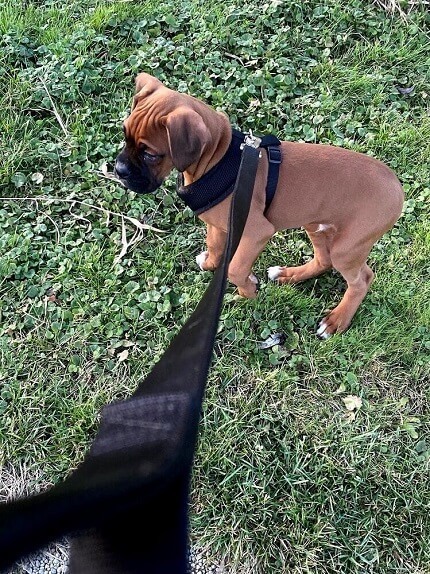
Boxers need a lot of exercise, and if they do not get it all the training sessions in the world will not correct some of their behaviors – especially destructive chewing behaviors – as these are often just the only way, they can release their energy.
They should be exercised every day, even in colder weather, although those sessions should be kept short and for young pups you should consider dog booties for the winter to help protect their young paws.
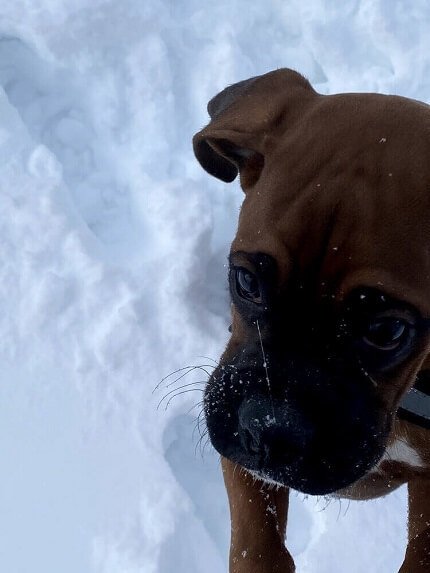
A young pup can be walked for up to fifteen minutes at a time several times a day, increasing walk times gradually.
You should make an effort to play too. Boxers love fetch and tug games, and these are a fantastic way to burn off that excess energy and give them the attention they crave.
ZippyPaws Tough No Stuffing Squeaky Plush Dog Toy

Click here to see this plush dog toy on Amazon
Boxers Need Brain Games Too
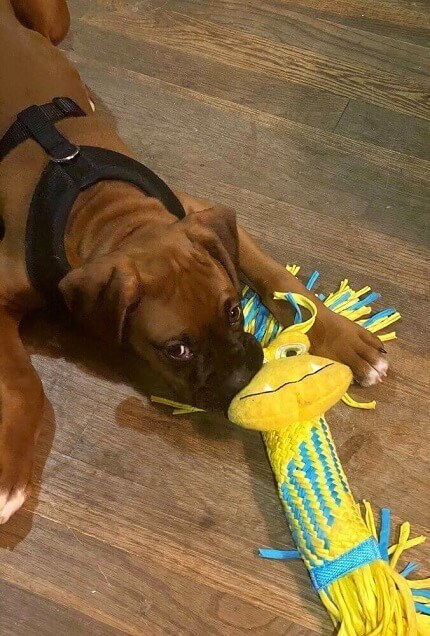
On a final note, because they are so smart boxers need mental challenges to help prevent bad behavior stemming from boredom. Whenever you can play with him, setting him challenges like the ones seen in the video below.
When he is alone leave him with a safe but stimulating toy. One of our favorites is the Outward Hound Hide and Squeak Squirrel Toy. This plush toy allows you to hide six squeaky squirrels for your boxer to find, with the added bonus that they can later take one with them as a cuddle toy when it is time to take a nap!

Click here to see this squeaky toy on Amazon
Final Word
Boxers are high energy, active pups who make great companions – and exercise partners – when they are properly trained and socialized. If you struggle to train your boxer dog talk to your vet to ask for a recommendation for a local professional dog trainer.
Making the investment in just a few lessons will be well worth it!

